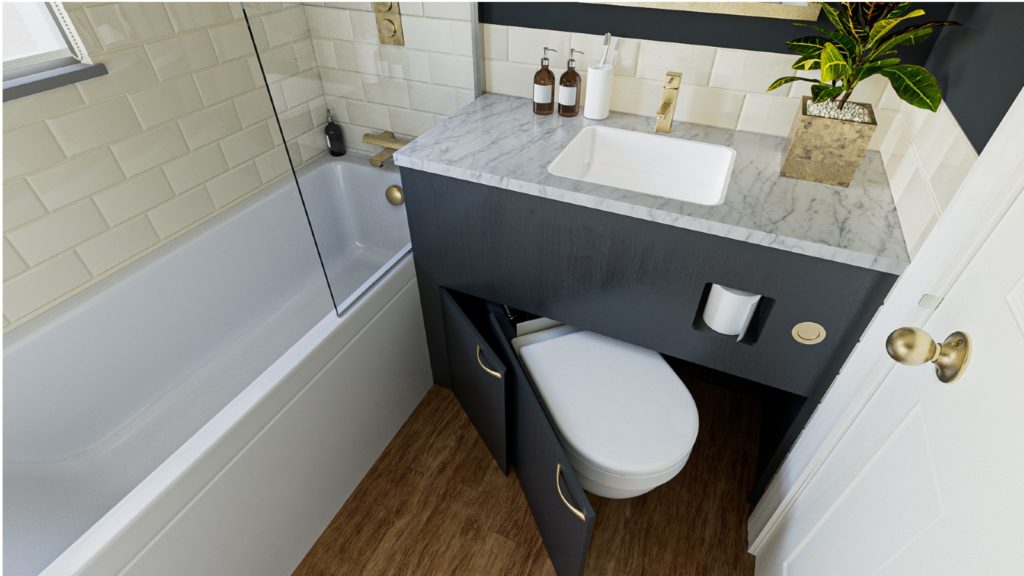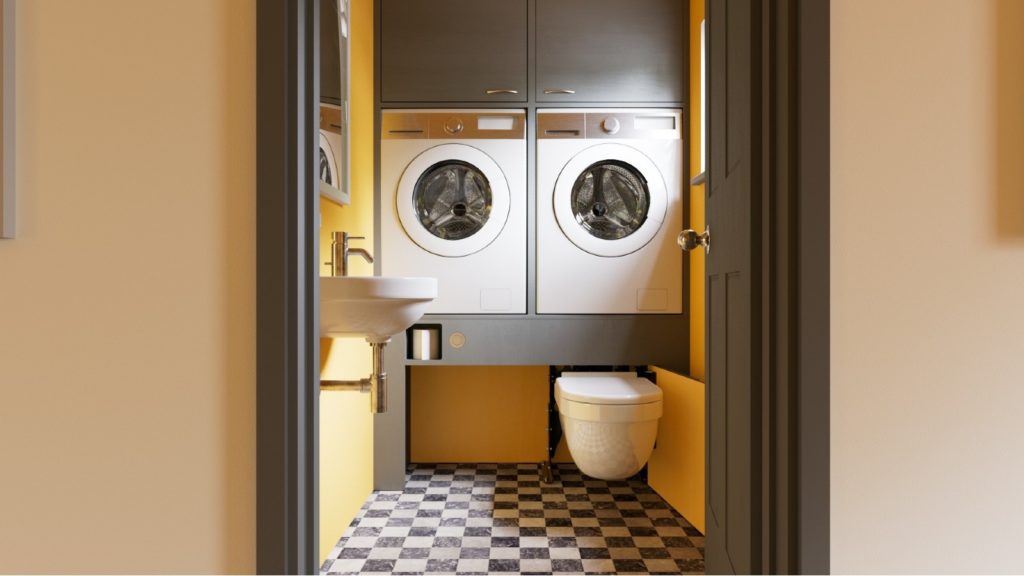Trailblazing product engineer Monty Ravenscroft talks us through his latest innovation, the moveable WC frame Hidealoo, and outlines its value for bathroom designers

Q: What is the Hidealoo?
For the past 400 years, the toilet has been static in the bathroom, whereas Hidealoo is a moveable WC frame.
Sponsored Video
It can be swung 90°, so it moves out of the room to fit into a standard cupboard.
It means all the dead space that’s above a normal loo can be used for something else, whether it’s a countertop, basin or a cupboard.
It also means you can install a loo in awkward spaces, such as a sloping ceiling, an attic bedroom, and it only needs to be visible in the room when it’s needed, then it’s hidden again.
Some of our customers are fitting them in places that you wouldn’t normally put a toilet, such as a utility – creating a lootility – so it is increasing the size of the market for bathrooms.
As more generations are living under one roof, it solves a dilemma for people who haven’t got the space for an extra bathroom.
Also, with the astronomical mortgage hikes, homeowners are renting spare rooms on Airbnb and it allows them to create guest WC facilities.
Q: How did you come up with the idea?
A: The origin was three-fold. My Dad was bedridden, and we wanted a more dignified solution than a commode or a bedpan.
I was also working on the Peckham House, which has been featured on Channel 4’s Grand Designs TV programme, where we were maximising the use of space in our newbuild home.
The groundbreaking development features elements that move and adjust, including a sliding glass roof, a bath concealed beneath a bed and a basin within a drawer.
The third influence was from co-presenting a TV series called Inside Out Homes, at that time, and they wanted me to invent something for every episode.
I thought everything else in my house in London moves, so why not move the loo?

Q: How long did it take to bring Hidealoo to the market?
A: It took about six years. A lot of that time was spent developing, testing and patenting the product.
I made some early prototypes that worked but they were very clunky and some way off being ready for sale. It is a very big leap to go from prototype to selling a product.
We met Sebastian Conran through one of our investors and sat down with him to look at the whole design to see if there were better ways to engineer it.
The biggest challenge was the design of the lock. We wanted to make sure it offered complete peace of mind but could be operated by one hand, so we built it into the door movement.
Q: How have you combated any resistance to the change from a static WC?
A: We have tested Hidealoo over a quarter of a million cycles and to bear weight of 400kg, where the regulations are 250kg.
Geberit has tested its frames to 400kg, so we did the same to reassure people of its quality.
Likewise, we have used heavier gauge steel than necessary, pressure tested Hidealoo and put the flexible pipe though a heat test – seven days at 70°C to 80°C – to artificially age it.
Our testing is the equivalent of 45 years of use and exceeds all the required WC frame standards.

Q: Do installers need specific training?
No. We designed Hidealoo so it fits like any other wall frame.
It fits any standard wall-hung pan and cistern and comes complete with fittings to couple to the mains waste pipe.
Hidealoo fits to the floor with four bolts and there is also the option of additional fixing to the wall.
The mechanism is reversible, so it can be left or right-handed, and it all comes in one box.
Q: How does it compare in price to a standard wall frame?
A: It retails at £1125 ex VAT, which is more expensive than a standard wall frame, but ours is a moving model, so it’s quite a different animal.

Q: Has the reaction been what you expected?
It’s the kind of reaction I had hoped for and that people would understand the concept. It’s nice to have created a product that’s relevant for many people.
Q: What is your ambition for Hidealoo over the next couple of years?
I’d like our design to make a difference to people who are struggling to use their space, because they just haven’t got enough. Our business model is to sell to 0.1% of the loo buying public.
Three years ago, when the market research was last undertaken, Britain was buying 3million new pans a year and Europe was buying 29million.
So, we don’t need many of those buyers converting to Hidealoos to have quite an opportunity.
I’d like to create more awareness though bathroom professionals to consumers.
It’s the trade that advises their customers and help people feel confident, by reassuring them about quality.
It just needs for bathroom professionals to display the Hidealoo in their showrooms to demonstrate how you can change space.
I’d like to take on bathroom showroom customers and grow the network at a sustainable rate.
Q: Will you be looking at extending the concept of Hidealoo?
Yes, we have got various other products that we are planning but can’t discuss them, as yet, due to pending patents.
We want to be much more than a one-trick pony. One of the products we are looking at recycles water used in the basin to fill the cistern.
We want to continue to explore the better use of space.



